Disclosure: We may earn commissions if you purchase products after clicking on a link from our site.
Public vs. private land deer hunting remains a major topic for hunting. When choosing where to hunt deer, consider the differences between public and private land. Regulations vary, affecting your experience. Public land is open to all, often free, with more hunting pressure. Private land may offer exclusive access with controlled pressure.
Understanding access, rules, and wildlife management is key. Public land offers convenience, but private land can have a mature game. Additionally, conservation practices differ, impacting the environment. Moreover, factors like cost, wildlife quality, and environmental impact should guide your decision. Make an informed choice that suits your hunting goals.

Table of Contents
Key Takeaways
- Public lands offer free access with varying hunting pressure levels.
- Private lands provide controlled access and potentially larger, mature deer.
- Public land hunting may result in less selective harvesting of deer.
- Private land ownership supports conservation efforts and sustainable practices.
- Understanding regulations, access, and hunting pressure is crucial for a successful deer hunting experience.
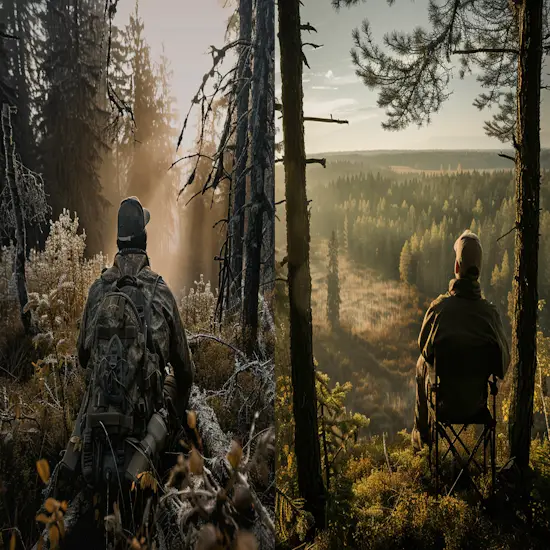
Land Ownership Overview
When considering the ownership and regulations surrounding hunting land, it’s important to understand the guidelines and restrictions that come with public and private properties.
Access and restrictions play a significant role in determining where and how you can hunt, impacting your overall experience. Additionally, recognizing the conservation benefits associated with different types of land ownership can help you make informed decisions when choosing your hunting locations.
Ownership and Regulations
Exploring the ownership and regulations surrounding hunting land provides essential insights for hunters seeking to maximize their experience. Understanding the rules is key, as public hunting areas have distinct regulations compared to private land. Regulations typically include season dates, legal weapons, bag limits, and antler restrictions. Some areas may even require special permits or drawings for hunting.
State wildlife agencies provide this information through booklets, apps, or websites, making it important to keep a copy of the rules while hunting to avoid violations. By being aware of and adhering to these regulations, you can guarantee a safe and enjoyable hunting experience while also contributing to the conservation efforts in place.
Access and Restrictions
Understanding the access and restrictions related to land ownership is pivotal for hunters looking to navigate hunting opportunities effectively. Private-land access requires effort like knocking on doors, paying lease fees, or owning land. Public lands are open to citizens for recreation, mostly free aside from some requiring a pass or permit.
Public lands are abundant across the U.S., allowing convenient and flexible hunting. Private lands often offer potential for larger, mature animals. Public lands see less selective harvesting, impacting the age class of animals harvested.
When considering where to hunt, these factors play an essential role in determining the type of hunting experience you’ll have, so make sure to understand the access and restrictions associated with each type of land.
Conservation Benefits
Consider the environmental benefits that come with owning or leasing hunting land, emphasizing conservation initiatives and sustainable practices. By having access to private hunting land, you can actively support conservation efforts and invest in land management practices.
This can lead to the creation of a healthy ecosystem, providing sustainable hunting opportunities and positively impacting wildlife populations. Private land ownership allows for controlled management practices that promote the growth and preservation of natural habitats.
Through responsible hunting practices and land stewardship, you can contribute to the long-term health and sustainability of the environment. Choosing to hunt on private land not only offers exclusive hunting opportunities but also enables you to play a significant role in conservation efforts.
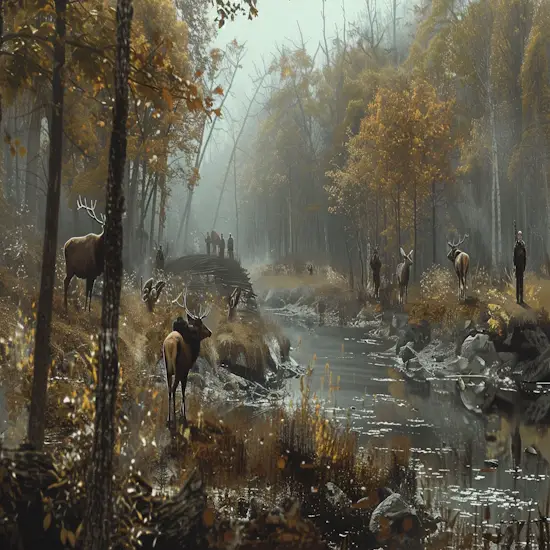
Hunting Pressure Considerations
When considering hunting pressure, you’ll find public lands may vary from moderate to intense pressure levels. In states like Pennsylvania and Colorado, public parcels can get crowded during hunting seasons. Private lands generally offer more controlled pressure, allowing for a more solitary hunting experience.
Pressure on Public Lands
Public lands experience varying degrees of hunting pressure, impacting the overall hunting experience for hunters. Some public parcels, like those in Pennsylvania and Colorado, can get crowded, leading to intense hunting pressure. This pressure can stem from various outdoor activities, affecting the tranquility of your hunt.
In contrast, private lands typically offer more controlled pressure, with limited hunters allowed, providing a quieter and more solitary hunting experience. On private lands, you can expect more space to yourself, reducing the chances of interference from other hunters. Understanding the pressure differences between public and private lands is essential in deciding where to hunt for a more enjoyable and successful hunting experience.
Controlled Pressure on Private Lands
Moving from the discussion on pressure differences between public and private lands, on private hunting lands, controlled pressure provides a quieter and more solitary hunting experience compared to public lands.
- Less Crowded Hunting Areas: Enjoy the peace of hunting with fewer people around.
- Increased Privacy: Have more space and solitude for your hunting activities.
- Limited Number of Hunters: Experience controlled pressure with fewer hunters allowed.
- Peaceful Environment: Hunt in a serene atmosphere away from the hustle of public lands.
- Enhanced Hunting Experience: Benefit from a more exclusive and personalized hunting adventure.
Competition and Solitude
Controlled hunting pressure on private lands offers a more tranquil and personalized hunting experience compared to public lands. Private lands generally have more controlled pressure, with limited hunters allowed, providing more space and solitude for your hunting outings.
On public lands, hunting pressure can vary from moderate to intense, with some states experiencing crowded parcels like Pennsylvania and Colorado. Public lands can also receive unpredictable pressure from various outdoor activities.
Hunting Strategies Comparison
To maximize your hunting success, consider the differences in hunting pressure between public and private lands.
- Public lands can have varying hunting pressures, from moderate to intense.
- Public parcels in states like Pennsylvania and Colorado can get crowded.
- Public parcels can receive unpredictable pressure from various outdoor activities.
- Private lands generally have more controlled pressure, with limited hunters allowed.
- Private lands can offer more space and solitude for hunting.

Access and Availability Differences
When it comes to accessing hunting land, you’ll encounter different methods and costs based on whether it’s public or private. Understanding the restrictions and regulations in place is essential for a successful hunting experience.
Additionally, considering the environmental benefits of conservation efforts can guide your decision-making process.
Land Access Methods
For hunters, understanding the differences in land access methods is essential for planning successful deer hunting trips. Here are some key points to keep in mind:
- Private-land access requires effort like knocking on doors, paying lease fees, or owning land.
- Private lands often offer potential for larger, mature animals.
- Public lands are open to citizens for recreation, mostly free aside from some requiring a pass or permit.
- Public lands are abundant across the U.S., allowing convenient and flexible hunting.
- Public lands see less selective harvesting, impacting the age class of animals harvested.
Cost of Land Leasing
The cost of leasing land for hunting varies based on factors such as location, acreage, and land quality. Private land leasing can range from a few hundred to several thousand dollars per acre, depending on the region and the amenities provided. Factors like exclusive access, well-managed wildlife populations, and prime hunting locations can drive up the leasing costs.
In contrast, public land hunting is generally more affordable or even free, with access granted through permits or passes. While public land may offer cost-effective options, private land leasing provides hunters with exclusive rights, controlled hunting pressure, and potentially higher-quality game.
Consider your budget and hunting preferences when deciding between public and private land for your hunting experience.
Hunting Restrictions Overview
Moving from the discussion on the cost of land leasing, let’s now focus on the access and availability differences in hunting restrictions between public and private lands.
- Access Effort: Private-land access requires effort like knocking on doors, paying lease fees, or owning land.
- Cost: Public lands are mostly free aside from some requiring a pass or permit.
- Availability: Public lands are abundant across the U.S., allowing convenient and flexible hunting.
- Game Quality: Private lands often offer potential for larger, mature animals.
- Harvest Impact: Public lands see less selective harvesting, impacting the age class of animals harvested.
Environmental Conservation Benefits
Consider the environmental benefits of leasing private hunting land to support conservation efforts and promote sustainable hunting practices. By leasing private land, you contribute to conservation initiatives, invest in land management practices, and help create a healthy ecosystem.
Sustainable hunting opportunities are fostered, leading to a positive impact on wildlife populations. Private lands often have controlled management practices, allowing for the preservation and growth of mature game animals. This selective harvesting on private lands aids in maintaining a balanced ecosystem.
Additionally, by leasing private land for hunting, you actively contribute to the protection and enhancement of wildlife habitats, ensuring a sustainable environment for future generations of hunters.
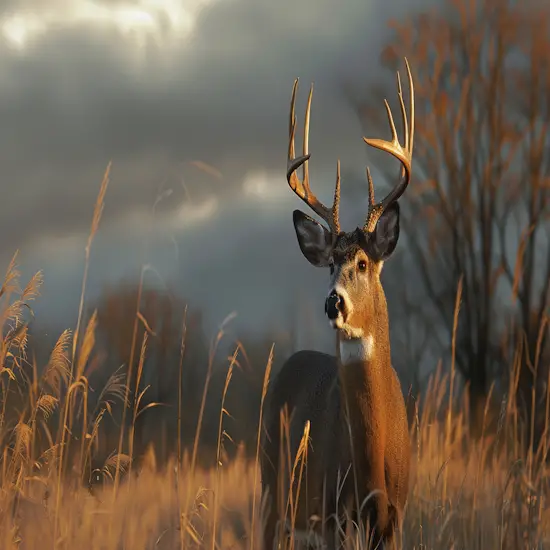
Wildlife Management Practices
When considering wildlife management practices in deer hunting, it’s important to focus on:
- Habitat conservation efforts
- Wildlife population sustainability
- Ecosystem health promotion
- Responsible hunting practices
By understanding these key points, you can contribute to:
- The preservation of natural habitats
- The long-term viability of wildlife populations
- The overall health of ecosystems
Implementing responsible hunting practices guarantees:
- A balanced and sustainable approach to enjoying the sport
- Maintaining the delicate ecological balance.
Habitat Conservation Efforts
Private hunting lands play an essential role in wildlife habitat conservation efforts through controlled management practices and sustainable hunting opportunities.
- Preservation of Natural Habitats: Private lands allow for the preservation of natural habitats important for wildlife survival.
- Species Diversity: Managed private lands support a diverse range of plant and animal species.
- Water Source Protection: Conservation efforts on private lands help protect water sources essential for wildlife.
- Controlled Development: By controlling development, private hunting lands maintain important wildlife corridors.
- Ecosystem Health: Sustainable hunting practices on private lands contribute to overall ecosystem health and balance.
Wildlife Population Sustainability
To guarantee the sustainability of wildlife populations, implementing effective wildlife management practices is essential. These practices involve carefully monitoring deer populations, adjusting hunting regulations accordingly, and promoting habitat diversity.
By conducting population surveys and setting appropriate harvest limits, wildlife managers can make sure that deer numbers remain stable and healthy. Additionally, implementing measures to protect deer habitats, such as preserving forests and creating food sources, plays an important role in sustaining wildlife populations.
Collaborating with hunters and landowners to promote responsible hunting practices and habitat conservation further contributes to the long-term sustainability of deer populations. Through these efforts, wildlife management practices help maintain balanced ecosystems and ensure the availability of deer for future generations to enjoy.
Ecosystem Health Promotion
Promoting ecosystem health through effective wildlife management practices is essential for maintaining balanced habitats and sustaining diverse wildlife populations.
- Implementing habitat restoration projects
- Controlling invasive species populations
- Monitoring and managing wildlife diseases
- Regulating hunting quotas to prevent overpopulation
- Collaborating with local communities for conservation efforts
Responsible Hunting Practices
Shifting from ecosystem health promotion to responsible hunting practices involves implementing strategies that prioritize wildlife conservation and sustainable hunting methods. When engaging in deer hunting, it is essential to adhere to ethical and responsible practices to guarantee the sustainability of wildlife populations. Here are some key practices to take into account:
| Responsible Hunting Practices | Description |
|---|---|
| Practice Safe Firearm Handling | Always handle firearms with care and follow proper safety protocols. |
| Respect bag limits and regulations | Adhere to hunting regulations regarding bag limits, hunting seasons, and legal methods. |
| Ethical Shot Placement | Aim for clean and quick kills to minimize for the animal. |
| Leave No Trace | Minimize your impact on the environment by cleaning up after yourself and respecting nature. |
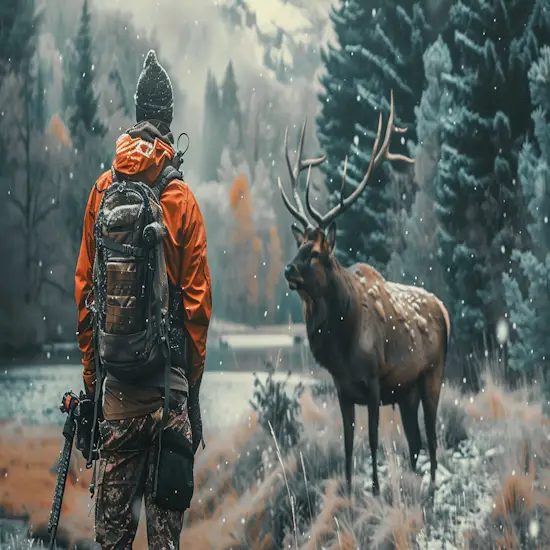
Financial Implications for Hunters
When contemplating the financial implications of hunting, you may want to think about the costs associated with private leases and how they can present obstacles for hunters.
Additionally, exploring the investment opportunities in conservation on private land and understanding the impact of landowner regulations on your hunting experience are key points to ponder before venturing out.
Being aware of these financial aspects can help you make informed decisions on where and how you choose to hunt.
Cost of Private Leases
Private hunting leases come with a financial commitment that hunters need to consider when planning their hunting activities. Consider the following points before making your decision:
- Initial lease cost varies based on location and quality of land.
- Additional expenses may include insurance, equipment, and travel.
- Leases may require long-term commitments or payment in advance.
- Hidden costs like habitat improvement or land maintenance can arise.
- Budgeting for a private lease guarantees a well-prepared and enjoyable hunting experience.
Financial Barriers for Hunters
Considering the financial implications for hunters, it’s essential to understand the potential barriers that may impact your hunting experience on private land. The cost associated with leasing private land can be a significant obstacle for many hunters, with expenses varying based on the size and quality of the hunting area. Additionally, limited access for those without private land rights and restrictions imposed by landowners can further pose challenges.
These financial barriers may deter hunters from experiencing the benefits of hunting on private land, such as less hunting pressure and the option to pursue high-quality game. Understanding and planning for these financial considerations are vital when deciding between hunting on public or private land.
Conservation Investment Opportunities
Exploring conservation investment opportunities can provide hunters with valuable avenues for supporting environmental sustainability and wildlife conservation efforts. Consider the following to understand the financial implications for hunters:
- Tax-Deductible Donations: Support conservation organizations through tax-deductible donations.
- Investment in Habitat Restoration: Contribute to projects that focus on restoring and enhancing wildlife habitats.
- Purchase of Conservation Tags: Invest in conservation tags to fund programs aimed at wildlife conservation.
- Sponsorship of Conservation Events: Support conservation events that raise awareness and funds for environmental initiatives.
- Partnerships with Conservation Groups: Collaborate with conservation groups to fund research and conservation projects.
Landowner Regulation Impact
To understand the financial impact of landowner regulations on hunters, consider the following key factors.
When hunting on private land, regulations set by landowners can lead to financial barriers for hunters. Costs associated with leasing private land and expenses based on the hunting area’s size can be significant. Additionally, restrictions imposed by landowners on hunting activities may limit hunters’ opportunities, increasing financial constraints.
Conversely, hunting on public land, where regulations are typically less stringent, can offer a more vital option. Public land access is generally free or requires minimal fees, providing a more cost-effective alternative for hunters.
Understanding these financial implications is essential for hunters when deciding between public and private land for their hunting pursuits.
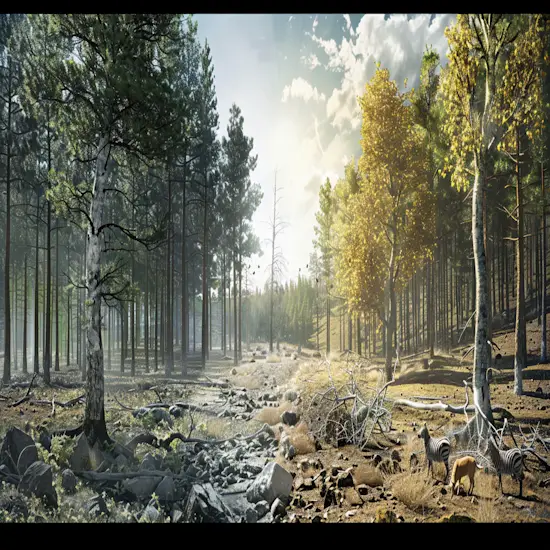
Environmental Impact Assessment
When assessing the environmental impact of deer hunting on public and private land, it’s vital to contemplate conservation practices, uphold ecosystem health, and prioritize sustainable hunting practices.
Your choices as a hunter can directly impact the preservation of wildlife habitats, the balance of ecosystems, and the long-term sustainability of hunting activities.
Conservation Practices Importance
Conservation practices play a crucial role in evaluating the environmental impact of hunting activities on both public and private lands. When considering the importance of conservation practices in hunting, keep in mind the following:
- Preservation of natural habitats
- Sustainable wildlife management
- Minimization of ecosystem disruption
- Protection of endangered species
- Promotion of biodiversity
Ecosystem Health Promotion
Promoting ecosystem health through effective environmental impact assessments is essential for ensuring the sustainability of hunting activities on both public and private lands. By conducting thorough assessments, potential risks to the environment can be identified and mitigated, ensuring that hunting practices don’t harm the delicate balance of ecosystems.
Understanding the impact of hunting activities on habitats, wildlife populations, and water sources is vital for making informed decisions that prioritize conservation. Implementing responsible land management practices based on these assessments can help preserve biodiversity, prevent habitat degradation, and promote the overall health of the ecosystem.
Sustainable Hunting Practices
To guarantee the sustainability of hunting activities on both public and private lands, conducting thorough environmental impact assessments is crucial. Hunting practices must be environmentally responsible to safeguard the long-term health of ecosystems. Here are essential points to take into account:
- Monitoring wildlife populations and habitat changes
- Implementing sustainable harvesting practices
- Preserving biodiversity and ecosystem balance
- Minimizing habitat destruction and fragmentation
- Adhering to regulations and conservation guidelines
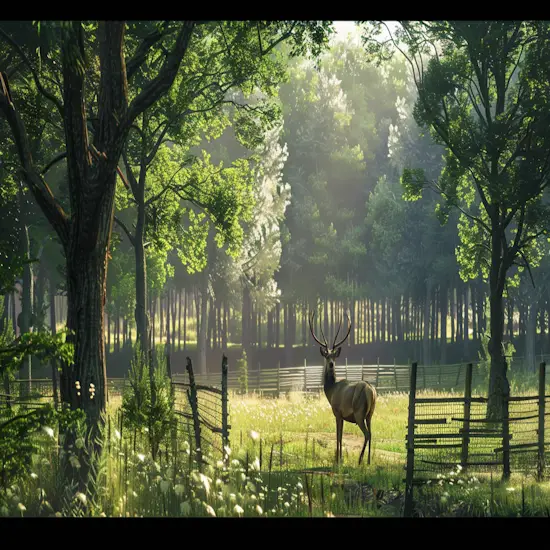
Game Animal Quality Factors
When considering game animal quality factors for deer hunting, you’ll focus on mature animal selection, hunting pressure impact, food source predictability, and resident versus transient animals.
Private lands often offer larger, mature animals due to controlled management practices, while public lands may see less selective hunting resulting in harvesting many young bucks annually.
Understanding these factors can influence your hunting strategy and potential success in different hunting environments.
Mature Animal Selection
Selecting a mature game animal involves considering various quality factors to enhance your hunting experience.
- Private lands often have larger, mature animals, leading to more selective harvesting.
- Controlled management on private lands includes passing on young bucks.
- Public lands see less selective hunting, resulting in the harvesting of many young bucks annually.
- Bucks that reach maturity tend to stay on private lands for safety.
- While public lands can produce big bucks, they’re fewer and farther between.
Hunting Pressure Impact
Considering the impact of hunting pressure on game animal quality factors can greatly influence your hunting success and experience. Public lands can have varying hunting pressures, ranging from moderate to intense, with some states like Pennsylvania and Colorado experiencing crowded parcels. These public areas may face unpredictable pressure from various outdoor activities.
Conversely, private lands generally maintain more controlled pressure, often limiting the number of hunters allowed. This controlled environment on private lands can offer more space and solitude for your hunting endeavors. Being aware of the hunting pressure on different types of land can help you adapt your strategies and expectations accordingly for a more fruitful hunting experience.
Food Source Predictability
Predicting food sources plays an essential role in determining game animal movement and hunting success.
- Private lands offer predictable food sources like existing fields or food plots.
- Game movement on private lands is more predictable, making ambush locations easier to identify.
Public lands may have planted fields, but they aren’t always in ideal ambush locations.
- Hunting deeper into public parcels or locating natural food sources can be a better strategy.
- Finding secluded food sources on public lands can lead to more game sightings.
Resident Vs. Transient
To understand the quality factors of game animals, it’s important to differentiate between resident and transient populations in hunting areas. Managed private lands typically harbor resident animals that find all their needs within the area. On the other hand, public lands host animals that may be transient, passing through instead of residing.
Resident animals on private lands tend to stay for safety, potentially leading to more mature and larger game animals. Public lands, while challenging, may yield success that brings unmatched satisfaction.
Hence, when planning your hunt, consider the behavior of resident and transient animals in your chosen hunting location to maximize your chances of a successful and fulfilling experience.
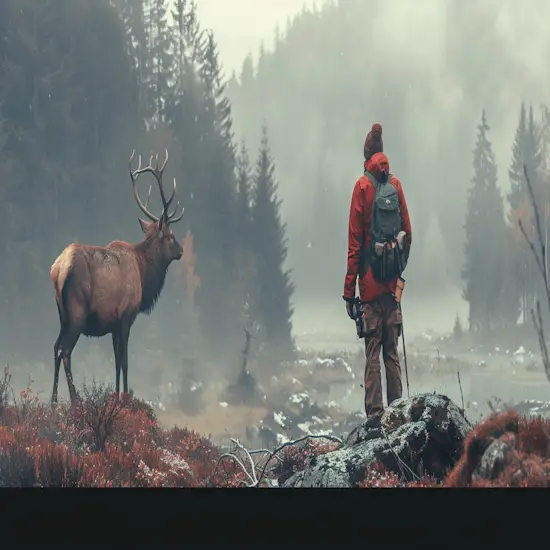
Rules and Regulations Awareness
When hunting on public or private land, it’s important to be aware of the specific rules and regulations in place. Understanding regulations such as season dates, permit requirements, bag limits, and antler restrictions is essential for a successful and lawful hunt.
Make sure to familiarize yourself with these guidelines to guarantee a safe and enjoyable hunting experience.
Regulations Overview
Understanding rules and regulations is essential for a successful and safe hunting experience on public and private lands. When it comes to deer hunting, being aware of the specific regulations in place can make all the difference. Here are some key points to keep in mind:
- Public hunting areas have distinct rules from private land.
- Regulations cover season dates, legal weapons, bag limits, and antler restrictions.
- Some areas may require special permits or drawings for hunting.
- State wildlife agencies offer information through booklets, apps, or websites.
- Keeping a copy of the rules while hunting is important to avoid violations.
Permit Requirements
For a successful and compliant deer hunting experience, make sure you’re familiar with the specific permit requirements set for your hunting area. Each hunting location may have unique regulations regarding permits, so it’s vital to understand and follow them to avoid any legal issues.
State wildlife agencies typically provide detailed information on permit requirements through booklets, apps, or websites. Some areas may even require special permits or drawings for hunting access. Keeping a copy of the rules while hunting is essential to guarantee you’re abiding by all regulations.
Bag Limits Clarified
To guarantee compliance with hunting regulations and avoid violations, understanding the bag limits for deer hunting is essential. Here are some key points to keep in mind:
- Bag limits specify the maximum number of deer you can legally harvest.
- Exceeding bag limits can result in fines, loss of hunting privileges, and legal consequences.
- Bag limits can vary by location, hunting season, and deer species.
- It’s important to be aware of the bag limits set by the state wildlife agency.
- Keeping track of the number of deer harvested is critical to staying within the legal limits and promoting sustainable hunting practices.
Season Dates Explained
When planning your deer hunting trips, it is crucial to be well-informed about the specific season dates set by the state wildlife agency. Understanding these dates guarantees that you are hunting legally and responsibly. Here is an example table showcasing the season dates for deer hunting in different states:
| State | Archery Season Dates | Firearm Season Dates |
|---|---|---|
| Texas | Sep 28 – Nov 1 | Nov 2 – Jan 3 |
| Michigan | Oct 1 – Nov 14 | Nov 15 – Nov 30 |
| Pennysylvania | Sep 21 – Nov 15 | Nov 30 – Dec 14 |
| Georgia | Sep 8 – Jan 10 | Oct 20 – Jan 10 |
Make sure to check for any updates or changes to the season dates before heading out for your hunt.
The Bottom Line
As a hunter, you have the choice between public and private land deer hunting. There are differences between both and you will have to determine which one works well for you. There are advantages and disadvantages to public and private land deer hunting.
The regulations are not the same. Moreover, public land is open to everyone while private land is not free for all. Public land understandably has more hunting pressure than private land. Additionally, private land may offer exclusive access with controlled pressure.
Additionally, conservation practices differ, impacting the environment. Moreover, factors like cost, wildlife quality, and environmental impact should guide your decision. In this article, we shared information about deer hunting on public and private lands.
In this article, we discuss public vs. private land deer hunting to help you decide which one is best for your hunting trip. Pre-season preparation for deer hunting is very important and you can read about it in this article. Additionally, you can also learn about deer population management from this article.
